I hope this solution might help - and I am sure it can be improved. I guess the picture below depicts what you want to do.
The Home screen is below.

The you want to press one of the 2 buttons to display address as shown below.

Lastly you want to press the second button to go to next page and also display the address as below:

The solutions steps are listed below:
Make use of locatioJS.dart but adapt it so that it can return the latitude and longitude
Use Future to save longitude and latitude in a list.
Use Map Box API to retrieve the address given the latitude and longitude (Reverse geocoding).
In the last step mapbox-Geocoding and mapbox-Search were used for the reverse geocoding though the Mapbox-Geocoding seem to work well - map-box search reverse geocoding is also included in the solution for the sake of completeness, perhaps it might work for anyone else. Note that as of writing this solution Geocoder and Geolocator do not seem to work well with flutter web.
I will provide here the full code soon.(Enjoy!)
Dependencies
cupertino_icons: ^1.0.0
js: ^0.6.2
mapbox_search: ^2.0.1+1
mapbox_geocoding: ^0.1.3
locatioJS.dart
// Change the line below
external void getCurrentPosition(success(GeolocationPosition pos));
// To this one
external void getCurrentPosition(Future<void>
success(GeolocationPosition pos));
main.dart
import 'package:flutter/material.dart';
import 'package:flutter/foundation.dart' show kIsWeb;
import 'locationJs.dart';
import 'package:js/js.dart';
import 'package:mapbox_search/mapbox_search.dart';
import 'package:mapbox_geocoding/mapbox_geocoding.dart';
import 'package:mapbox_geocoding/model/reverse_geocoding.dart';
void main() => runApp(MyApp());
class MyApp extends StatelessWidget {
@override
Widget build(BuildContext context) {
return MaterialApp(
// Provide a function to handle named routes. Use this function to
// identify the named route being pushed, and create the correct
// Screen.
onGenerateRoute: (settings) {
// If you push the PassArguments route
if (settings.name == PassArgumentsScreen.routeName) {
// Cast the arguments to the correct type: ScreenArguments.
final ScreenArguments args = settings.arguments;
// Then, extract the required data from the arguments and
// pass the data to the correct screen.
return MaterialPageRoute(
builder: (context) {
return PassArgumentsScreen(
title: args.title,
message: args.message,
);
},
);
}
// The code only supports PassArgumentsScreen.routeName right now.
// Other values need to be implemented if we add them. The assertion
// here will help remind us of that higher up in the call stack, since
// this assertion would otherwise fire somewhere in the framework.
assert(false, 'Need to implement ${settings.name}');
return null;
},
title: 'Navigation with Arguments',
home: HomeScreen(),
);
}
}
class HomeScreen extends StatefulWidget {
@override
_HomeScreen createState() => new _HomeScreen();
}
class _HomeScreen extends State<HomeScreen> {
// variables for keeoing track of state
bool loading = false;
List mylatlong ; // store lat long here
String currentAddress = 'Not found'; // for the address
bool pressGeoON = false; // for keeping track of button state
bool cmbscritta = false; // for keeping track of button state
/////////////////////////////////////////////////////////////////////////////////////
// this sets up the map box api .//
// open map box account. Then go to your dashboard and copy the APIKey or Token
//Set up a test api key before running for maboxsearch package
String apiKey = "paste your Mapbox API key (Token ) here";
// Map-box geocoding requires the initialisation below
MapboxGeocoding geocoding = MapboxGeocoding("paste your Mapbox API key (Token ) here"); //////////////////////////////////////////////////////////////////////////////////////////
// set the information needed the lat long here
Future _getUserInfo() async {
setState(() {
loading = true;
});
// call loc here to initiate and get the lat long
// loc is defined down in the code : line 109
loc();
setState(() {
loading = false;
});
}
// function for succesful collecting the lat long
success(pos) async {
List mypos;
try {
//print(pos.coords.latitude);
//print(pos.coords.longitude);
mypos = [pos.coords.latitude, pos.coords.longitude ];
} catch (ex) {
print("Exception thrown : " + ex.toString());
//user = await GetUserInfo.getInfo(kola);
}
// once the lat long is retrieved set the values and sassign to th my lat logn variable
setState(() {
mylatlong = mypos;
print(mylatlong);
});
}
// define future for getting the lat long
// loc is called in getUserInfo (line 78) which is in turn called in initState
Future<void> loc() async {
//check if web.
if (kIsWeb) {
// get the the lat long by calling success. Note allowInterop
// which enables Returns a wrapper around a function f that can be called from JavaScript using package:js
// cross check the definition of getCurrentPosition in locatioJS.dart (line 7)
getCurrentPosition(allowInterop((pos) => success(pos)));
}
}
//Reverse geocoding package for getting city name. Get place/city name from latitude and longitude.
getCity(double lat, double lng) async {
try {
ReverseGeocoding reverseModel =
await geocoding.reverseModel(lat, lng, limit: 7, types: 'region'); //types can be region, district, neighborhood see https://docs.mapbox.com/api/search/#data-types
print(reverseModel.features[0].placeName);
return (reverseModel.features[0].placeName);
} catch (Excepetion) {
return 'Reverse Geocoding Error';
}
}
// this future to get getAddressFromLatLng to return the city name
Future<void> testkey() async {
await getAddressFromLatLng(apiKey).catchError(print);
//await placesSearch(apiKey).catchError(print);
}
// the function icalls geocity and uses it to get city name/address
Future getAddressFromLatLng(String apiKey) async {
// *********** using map box search ********************************//
// this gives empty string sometimes
// initialise mapbox search api
var geoCodingService = ReverseGeoCoding(
apiKey: apiKey,
//country: "BR",
limit: 5,
);
// get the lat ling stores in the variable mylatlong (line 72) . My latlong is set by loc (line 119)
var lat = mylatlong[0];
var long = mylatlong[1];
// get the address
var addresses = await geoCodingService.getAddress(Location(
lat: lat, //-19.984846,
lng: long , //-43.946852,
));
print(addresses); // print to view resulta
// ***********map box searxh ends here ********************************//
// *********** using map box geocoding ********************************//
// this calls th geoCity function (line 133) and uses map geocoding to retrieve
var newadr = await getCity(lat, long);
print('the mapbox geocoding api returns $newadr');
// *********** using map box geocoding ********************************//
// set the address to the value returned by mapbox geocoding
setState(() {
currentAddress = newadr ;
});
/////////////////////////////////////////
}
@override
void initState() {
_getUserInfo();
super.initState();
}
@override
Widget build(BuildContext context) {
return Scaffold(
appBar: AppBar(
title: Text('Home Screen'),
),
body: Center(
child: Column(
mainAxisAlignment: MainAxisAlignment.center,
children: <Widget>[
// A button that navigates to a named route that. The named route
// extracts the arguments by itself.
ElevatedButton(
child: Text("Go to Page 2"),
onPressed: () {
testkey();
// When the user taps the button, navigate to a named route
// and provide the arguments as an optional parameter.
Navigator.pushNamed(
context,
PassArgumentsScreen.routeName,
arguments: ScreenArguments(
'Welcome to page 2 ',
'This was retrieved from lat long $mylatlong and your adress is $currentAddress',
),
);
//getAddressFromLatLng();
},
),
// A button that navigates to a named route. For this route, extract
// the arguments in the onGenerateRoute function and pass them
// to the screen.
ElevatedButton(
child: cmbscritta ? Text("Geolocation is $mylatlong , address $currentAddress ") : Text("Display lat long"), //Text("Navigate to a named that accepts arguments"),
onPressed: () {
// When the user taps the button, navigate to a named route
// and provide the arguments as an optional parameter.
testkey();
setState(() {
pressGeoON = !pressGeoON;
cmbscritta = !cmbscritta;
//getAddressFromLatLng();
});
},
),
],
),
),
);
}
}
class PassArgumentsScreen extends StatelessWidget {
static const routeName = '/passArguments';
final String title;
final String message;
// This Widget accepts the arguments as constructor parameters. It does not
// extract the arguments from the ModalRoute.
//
// The arguments are extracted by the onGenerateRoute function provided to the
// MaterialApp widget.
const PassArgumentsScreen({
Key key,
@required this.title,
@required this.message,
}) : super(key: key);
@override
Widget build(BuildContext context) {
return Scaffold(
appBar: AppBar(
title: Text(title),
),
body: Center(
child: Text(message),
),
);
}
}
// You can pass any object to the arguments parameter. In this example,
// create a class that contains both a customizable title and message.
class ScreenArguments {
final String title;
final String message;
ScreenArguments(this.title, this.message);
}
Feel free to adapt this to fit more what you intend to achieve.
Best.


